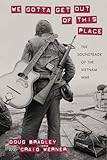Support H-Net | Buy Books Here | Help Support the NBN and NBN en Español on Patreon | Visit New Books Network en Español!
- African Studies
- African American Studies
- American Politics
- American Studies
- American South
- American West
- Asian American Studies
- Australian and New Zealand Studies
- British Studies
- Canadian Studies
- Caribbean Studies
- Central Asian Studies
- Chinese Studies
- East Asian Studies
- Eastern European Studies
- European Politics
- French Studies
- German Studies
- Iberian Studies
- India Studies
- Indian Ocean World
- Iranian Studies
- Irish Studies
- Israel Studies
- Italian Studies
- Japanese Studies
- Korean Studies
- Latino Studies
- Latin American Studies
- Mexican Studies
- Middle Eastern Studies
- Native American Studies
- Pacific Studies
- Polish Studies
- Russian and Eurasian Studies
- Southeast Asian Studies
- South Asian Studies
- Turkish Studies
- Ukrainian Studies
- Western European Studies
- World Affairs
- Animal Studies
- Anthropology
- Archaeology
- Business, Management, and Marketing
- Media
- Critical Theory
- Disability Studies
- Drugs, Addiction and Recovery
- Education
- Economics
- Finance
- Geography
- Gender Studies
- Genocide Studies
- Higher Education
- Human Rights
- Journalism
- Language
- Law
- LGBTQ+ Studies
- National Security
- Philanthropy
- Philosophy
- Policing, Incarceration, and Reform
- Political Science
- Politics & Polemics
- Public Policy
- Sex, Sexuality, and Sex Work
- Sociology
- Sound Studies
- Sports
- Urban Studies
- Big Ideas
- Celebration Studies
- Co-Authored
- Cover Story
- Historical Materialism
- History Ex Silo
- Interpretive Political and Social Science
- Invested Investor
- Landscape Architecture
- Late Antiquity
- Mormonism
- NBN Book of the Day
- NBN Seminar
- Postscript: Conversations on Politics and Political Science
- Practical History
- Preparing for Life After Grad School
- Psychology and Climate Change
- Syriac Studies
- The Chair: In The Room at the Fed
- New Books with Miranda Melcher

Mar 19, 2017
Arresting Development
Comics at the Boundaries of Literature
Summary
There's a common myth about the history of comic books and strips. It's the idea that the medium languished for decades as a sort of time-wasting hobby for children, but now has redeemed itself and can be appreciated even by the literary. University of Georgia professor and comics scholar Christopher Pizzino argues that this history is as false as Clark Kent's eyeglass prescription. Comics, he says, are still burdened by their early stigma, their status in modern culture tenuous at best.
In Arresting Development: Comics at the Boundaries of Literature (University of Texas Press, 2016), Pizzino offers up an educated and entertaining history of the comics medium, then devotes a chapter to each of four groundbreaking comic artists. In one, he looks at the film noir and manga-influenced work of Frank Miller, creator of The Dark Knight Returns and Sin City. Another chapter examines the work of Alison Bechdel, whose famed lesbian-centered comic strip, Dykes to Watch Out For, led to pop culture's Bechdel Test, and whose autobiographical graphic novel Fun Home is now a hit musical. Charles Burns, whose Black Hole tells a haunting story of a teenage plague, is highlighted as an artist unable to sugarcoat his work even when he was trying to have his art published in Playboy magazine. And Gilbert Hernandez, best known for his innovative Love and Rockets series, created with his brother Jaime, shows himself to be nigh-fearless when it comes to his work, blending everything from erotica to violence to a biography of Mexican artist Frida Kahlo.
Join Pizzino and pop-culture junkie and author Gael Fashingbauer Cooper (no relation to Archie Comics' Betty Cooper) for a lively look at comics and their evolution, and why the very idea that the medium has safely come of age may be working against it.





























































































